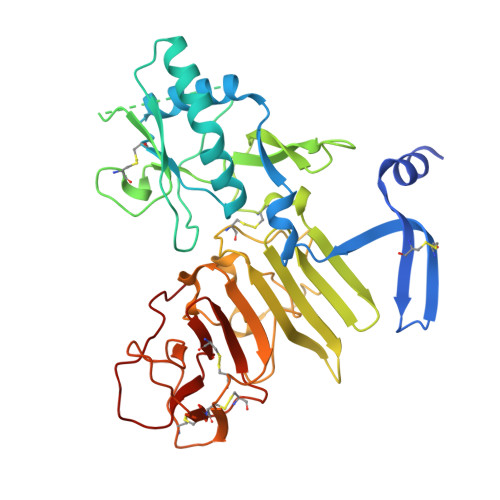Use of massively multiple merged data for low-resolution S-SAD phasing and refinement of flavivirus NS1.
Akey, D.L., Brown, W.C., Konwerski, J.R., Ogata, C.M., Smith, J.L.(2014) Acta Crystallogr D Biol Crystallogr 70: 2719-2729
- PubMed: 25286855
- DOI: https://doi.org/10.1107/S1399004714017556
- Primary Citation of Related Structures:
4TPL - PubMed Abstract:
An emergent challenge in macromolecular crystallography is the identification of the substructure from native anomalous scatterers in crystals that diffract to low to moderate resolution. Increasing the multiplicity of data sets has been shown to make previously intractable phasing problems solvable and to increase the useful resolution in model refinement. For the West Nile virus nonstructural protein 1 (NS1), a protein of novel fold, the utility of exceptionally high multiplicity data is demonstrated both in solving the crystal structure from the anomalous scattering of the native S atoms and in extending the useful limits of resolution during refinement. A high-multiplicity data set from 18 crystals had sufficient anomalous signal to identify sulfur sites using data to 5.2?? resolution. Phases calculated to 4.5?? resolution and extended to 3.0?? resolution were of sufficient quality for automated building of three-quarters of the final structure. Crystallographic refinement to 2.9?? resolution proceeded smoothly, justifying the increase in resolution that was made possible by combining multiple data sets. The identification and exclusion of data from outlier crystals is shown to result in more robust substructure determination.
Organizational Affiliation:
Life Sciences Institute, University of Michigan, 210 Washtenaw Avenue, Ann Arbor, MI 48109-2216, USA.



















